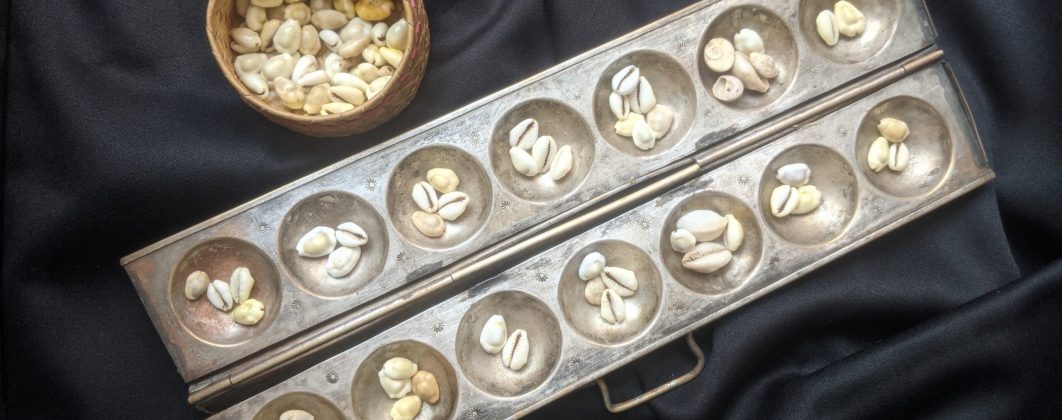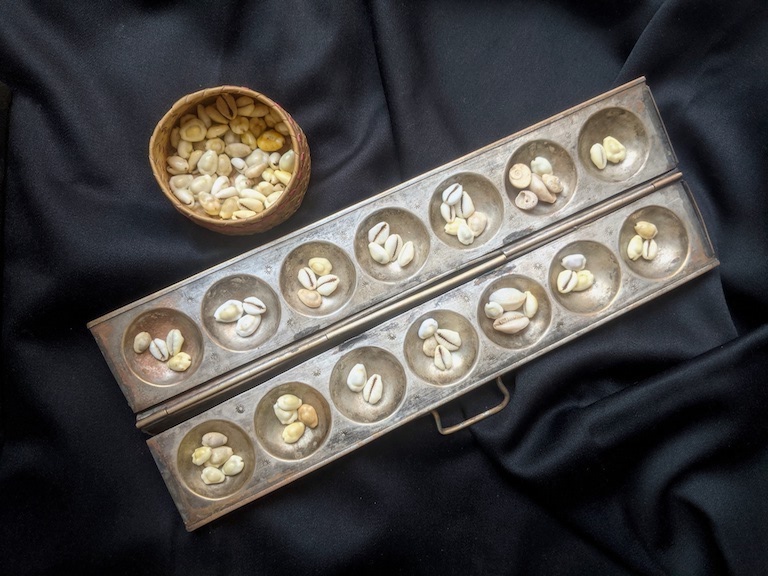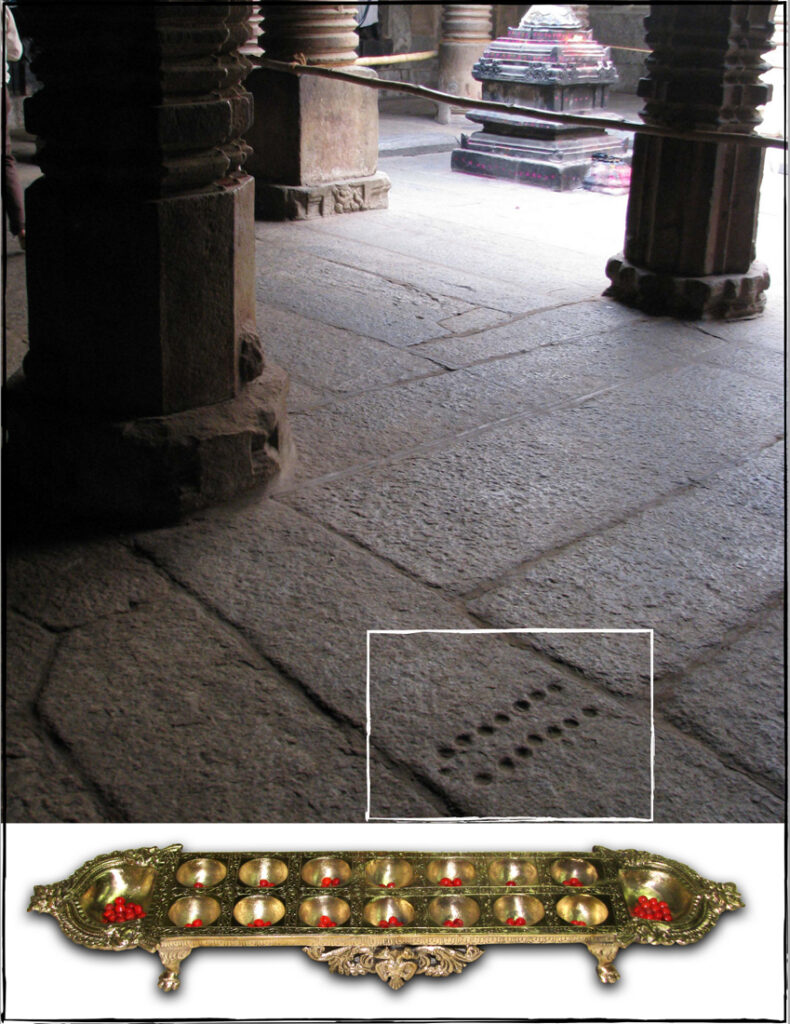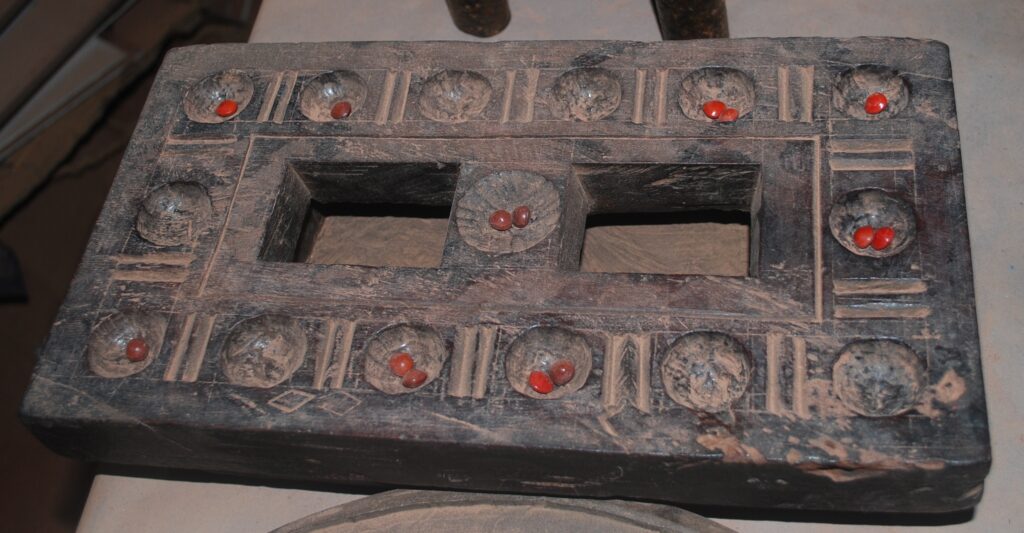

Her pullankuzi box was the star celebrity of our afternoon games at home. Sparkling in antique gold, it sat comfortably on the top shelf next to my grandma’s bed, and to play with it needed a lot of hard work to please her. We would do everything for the box- get her morning coffee, water the jasmine plants in the garden, and even, massage her legs at times!
Pallankuzi, the traditional Mancala board game, was my fondest summer game. Some of my best childhood memories with my cousins were around it. We mostly preferred indoor games as the sun was all set to drain our energy most of the summer afternoons. We turned our courtyard into a playground. From Snake and ladders to ludo to pullankuzi to inventing our board games, our midday tales of fun could be an interesting book titled, “How to beat the heat with a board game.” It would be a best seller talking about all the crazy things we did as kids and caused trouble at my grandparent’s house. A story worth telling!
What if I told you there are 146 possibilities to win this two-player game!
This is one game that makes everyone happy without needing to wrack their brain but happiness has a price. The game began with a bet- Empty someone’s piggy bank for yummy coconut burfi at the old Kirana store. “Make sure all the pits are correctly filled. Last time you put three more in one of them and that’s cheating,” my go-to dialogue every time we played the game. “Yaa sure!”, giggled my sister who would always cheat on me and win the game. I must have lost count of how many times she cheated to win the game despite my desperate victory.
Game boards have been an integral part of our lives and references to these games are seen throughout our history. Pullankuzi (mancala) is the oldest boarding in the world and it is popular even today.
Mancala or Vamana Guntalu or Pullankuzi is a two-player game played with small stones, beans, or seeds and rows of holes or pits in the earth, a board or other playing surface. Players begin by placing a certain number of seeds in each of the pits on the game board. A turn consists of removing all seeds from a pit, “sowing” the seeds (placing one in each of the following pits in sequence) and capturing based on the state of the board. The objective is usually to capture all or some set of the opponent’s pieces.
There are cavities on the river banks, rocks or boulders, historic places, and the temple precincts.
The perks of being an architect and working in heritage places are to enjoy these nuances. Documenting the local customs was a major part of heritage documentation which included talking, sketching, and playing games to understand their way of living. Most of my afternoons at Anegundi (a small village near Hampi) would go away playing pullankuzi or watching the kids play at Chintamani temple (at the Tungabhadra riverbank).
Take a stroll in the remote villages and you can see the crowd gathered to play the game in the temple courtyard. It would be a riot! A messy affair, at times and needed serious crowd control! The gathering would be divided into two groups and the elders would start instructing on how to clear the pits faster to win. Vamana guntalu (Pullankuzi) was the family heirloom and every house in Anegundi had one in wood, brass, copper or even gold! (The royal family has a gold box). Maintenance was a messy affair. It would be cleaned once a week, polished regularly and in the case of a wooden box, varnished and painted. The family ritual was to play the game once a day and everyone would take turns. They would often challenge each other to a mancala marathon that would last for two hours easily. The winning team would give us a chai party with homemade snacks while the losing team made plans on how to win the next time.

Source -What’s Left of Games are Boards Alone: on Form, Incidence, and Variability of Engraved Game Boards at Vijayanagara (Research Paper)

When stories from mythology began to get tangled with the traditional board games, history becomes more engaging and intriguing.
Mancala is also known as “Sita Devi Aata”. A game that Sita supposedly played at the Ashok Vatika in Ravans’s captivity. A single-player game that can engage the player for many hours. It seems that Ravana came to talk to Sita only when she had finished a game and not intruded. So, Sita played this game endlessly to avoid confronting him.
The real fun of these board games is when everyone gets involved and those small pockets of time would turn into uncountable memories. Board games are fascinating tools of interaction, entertainment, and learning. They bring a lot of memories from the good old days- a childhood spent playing with grandparents and cousins. The rush of those precious moments makes them more special.

References:

Copyright © 2021 YK Antiques Home Museum